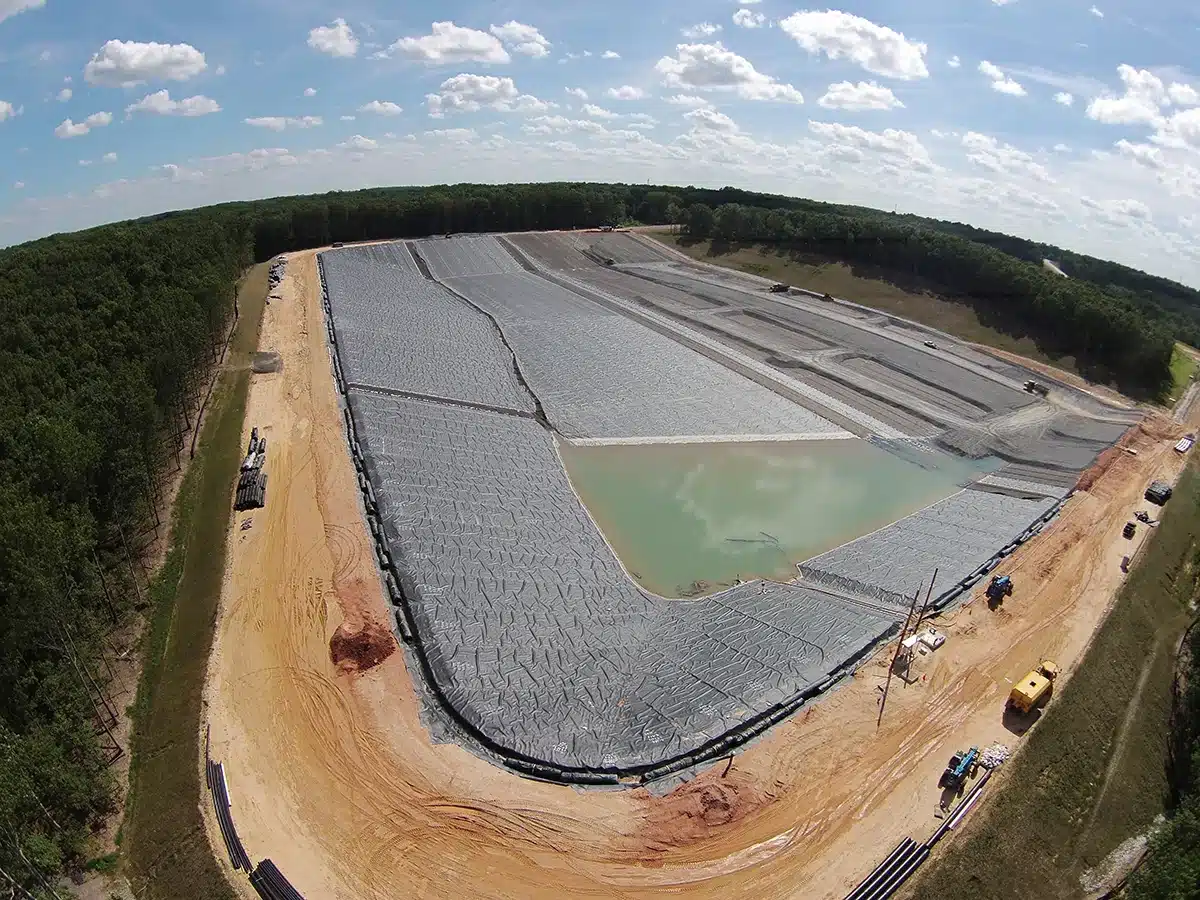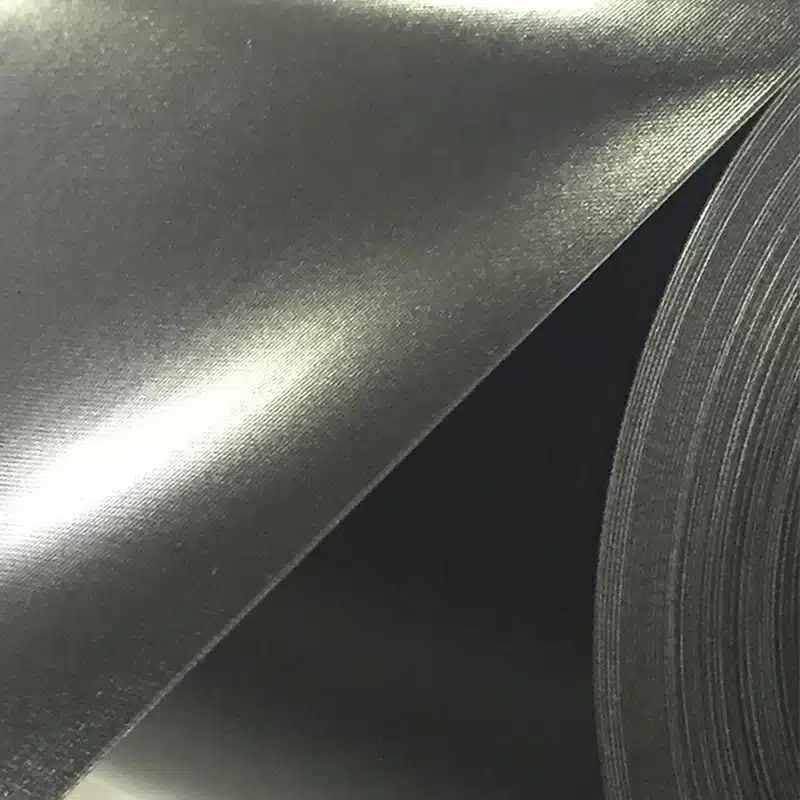+86-159 9860 6917
info@geofantex.com
geofantex@gmail.com
+86-400-8266163-44899
Prefabricated geomembranes are widely used in modern engineering and environmental projects. These synthetic liners offer reliable containment and protection in a range of settings, from waste management to water conservation. Unlike traditional geomembranes that require on-site assembly, prefabricated versions simplify the installation process, allowing for quicker deployment and reduced labor. Understanding the applications, manufacturing processes, and benefits of prefabricated geomembranes can highlight their role in sustainable and efficient construction practices.
What is a Geomembrane?
A geomembrane is a synthetic membrane liner or barrier used to control fluid movement in engineering projects, environmental applications, and various construction works. It is made from polymers such as polyethylene (HDPE, LDPE), PVC, EPDM, or other materials designed for specific purposes.
Key Features of Geomembranes:
- Impermeability: They are engineered to resist water, gas, or chemical seepage.
- Durability: High resistance to weathering, UV radiation, and chemicals.
- Flexibility: Adaptable to various surfaces and applications.
- Eco-friendly: Helps prevent contamination and promotes sustainable environmental management.
Common Applications:
- Landfill liners and caps: To contain and isolate waste material.
- Ponds and reservoirs: For water storage and agricultural purposes.
- Mining operations: To contain chemicals in leachate ponds.
- Road and railway construction: For drainage and waterproofing.
- Environmental protection: In hazardous waste management and soil remediation.
Geomembranes play a critical role in infrastructure and environmental projects by providing a reliable barrier to protect soil, water, and other resources.

How Are Geomembranes Made?
Geomembranes are synthetic membranes widely used for containment and protection purposes. Here is a detailed explanation of their manufacturing process, types, and applications:
Raw Materials
- Polymers: Common materials include High-Density Polyethylene (HDPE), Low-Density Polyethylene (LDPE), Polyvinyl Chloride (PVC), and Ethylene Propylene Diene Monomer (EPDM).
- Additives: Stabilizers, antioxidants, carbon black, and plasticizers are used to enhance durability, UV resistance, and flexibility.
Manufacturing Process
- Extrusion: Polymers are melted and mixed with additives to form a homogeneous mixture. The molten material is shaped into sheets using flat-die or blown-film extrusion techniques.
- Calendering: Used mainly for PVC geomembranes. The polymer mixture is passed through rollers to achieve the desired thickness and smoothness.
- Lamination: Involves bonding multiple layers of materials to improve strength. Often used to create composite geomembranes with a geotextile backing.
- Coating: Polymers are applied as a coating over other materials to achieve specific properties like waterproofing or chemical resistance.
Technologies Employed
- Advanced Extrusion Lines: Ensure uniform thickness and quality.
- Automated Calendering Systems: Maintain precise control over sheet dimensions.
- Laser Inspection: For non-destructive thickness and defect detection.
Quality Control Measures
- Material Testing: Tensile strength, puncture resistance, and environmental stress-cracking resistance tests.
- Thickness Uniformity Checks: To meet project-specific requirements.
- Surface Inspections: Ensuring no visible defects or pinholes.
Types of Geomembranes and Applications
- HDPE: Resistant to chemicals and UV, commonly used in landfills and mining.
- LDPE/LLDPE: More flexible than HDPE, suitable for water reservoirs and irrigation ponds.
- PVC: Flexible and cost-effective for temporary applications.
- EPDM: Elastomeric and highly durable, used in aquaculture and decorative ponds.
- Composite Geomembranes: Incorporate geotextiles for enhanced mechanical stability, often used in slope protection.
Geomembranes are crucial for environmental sustainability and engineering projects, with each type tailored for specific needs based on properties and environmental conditions.
Where Are Geomembranes Used?
Geomembranes are versatile synthetic materials used in a wide range of applications, primarily for their impermeable properties. They are typically used in situations where the control of water, gas, or other substances is critical. Below are the key areas where geomembranes are commonly used:
- Landfills: Geomembranes are widely used in landfill liners to prevent the contamination of soil and groundwater. They provide an impermeable barrier between waste materials and the environment, stopping leachate from escaping and polluting surrounding areas.
- Water Reservoirs and Ponds: In applications like ponds, water reservoirs, and dams, geomembranes are used to line the structure to prevent water loss due to leakage. They are especially useful in areas with poor soil permeability, ensuring water is contained for irrigation, industrial use, or even aquaculture.
- Mining: Geomembranes are used in the mining industry to contain wastewater and toxic materials in heap leach pads and tailings ponds. They prevent the leaching of harmful substances into the surrounding environment, playing a crucial role in environmental protection.
- Agriculture: In agricultural applications, geomembranes are used in irrigation systems to line canals, ponds, and reservoirs, preventing water seepage. They are also used in greenhouses for controlling the humidity and temperature by reducing moisture loss.
- Construction and Civil Engineering: Geomembranes are used in construction projects for waterproofing foundations and in tunnels to prevent water ingress. They are also used in roads and embankments to provide an impermeable layer that protects underlying structures from water damage and erosion.
- Wastewater Treatment Plants:In wastewater treatment facilities, geomembranes are used to line lagoons and basins, ensuring that wastewater is contained and does not seep into surrounding areas. This helps in managing waste and maintaining environmental safety.
- Agricultural Waste Management: Geomembranes are employed in the containment of organic waste, including manure storage, helping to minimize pollution and odors. They also help manage run-off from agricultural operations, preventing water contamination.
- Coastal Protection: Geomembranes are used for erosion control in coastal areas. They are applied in the construction of coastal barriers, dikes, and seawalls to protect against the damaging effects of tides and storms.
- Fish Farming (Aquaculture): Geomembranes are used in aquaculture to create containment ponds for fish and other aquatic species. They help in controlling water quality by preventing the leakage of water and ensuring a stable environment for aquatic life.
- Geotechnical Engineering: Geomembranes are employed in geotechnical projects to stabilize slopes, control water flow, and improve the performance of soil by preventing seepage. They are commonly used in retaining walls and slope stabilization systems.
Geomembranes are used in diverse applications ranging from environmental protection, agricultural management, to civil engineering, providing a reliable solution for containment, waterproofing, and erosion control. They are particularly valuable in projects that involve managing or preventing the movement of water, waste, or hazardous substances.
What is the Difference Between Geotextile and Geomembrane?
| Feature | Geotextile | Geomembrane |
|---|---|---|
| Material | Woven, nonwoven, or knitted synthetic fibers | Polyethylene, PVC, HDPE |
| Permeability | Permeable (allows water flow) | Impermeable (prevents fluid flow) |
| Function | Filtration, separation, reinforcement, drainage | Barrier for containment and leak prevention |
| Applications | Road construction, drainage, erosion control | Landfills, reservoirs, ponds, containment |
| Installation | Lightweight, flexible, easy to install | Rigid, requires specialized installation |
| Cost | Typically less expensive | Generally more expensive |
In conclusion, while geotextiles are used for filtration, separation, and reinforcement in various civil engineering applications, geomembranes serve as impermeable barriers to prevent fluid leakage, typically in containment or environmental protection contexts.
Prefabricated geomembranes offer a reliable, time-efficient solution for fluid containment in environmental and structural applications. By understanding the differences between geomembranes and geotextiles, the production process, and their various uses, we see why prefabricated geomembranes are crucial in modern engineering. Their role in containment ensures safe and sustainable construction practices, protecting our soil and water resources for the future.



Get Free Sample
We’ll respond as soon as possible(within 12 hours)






















